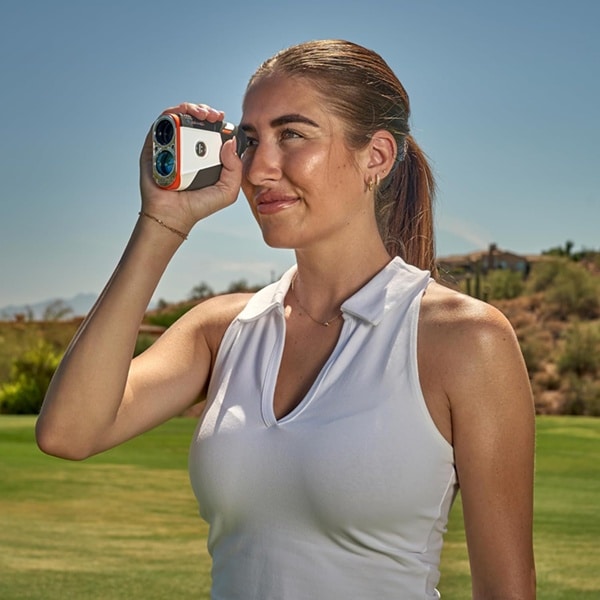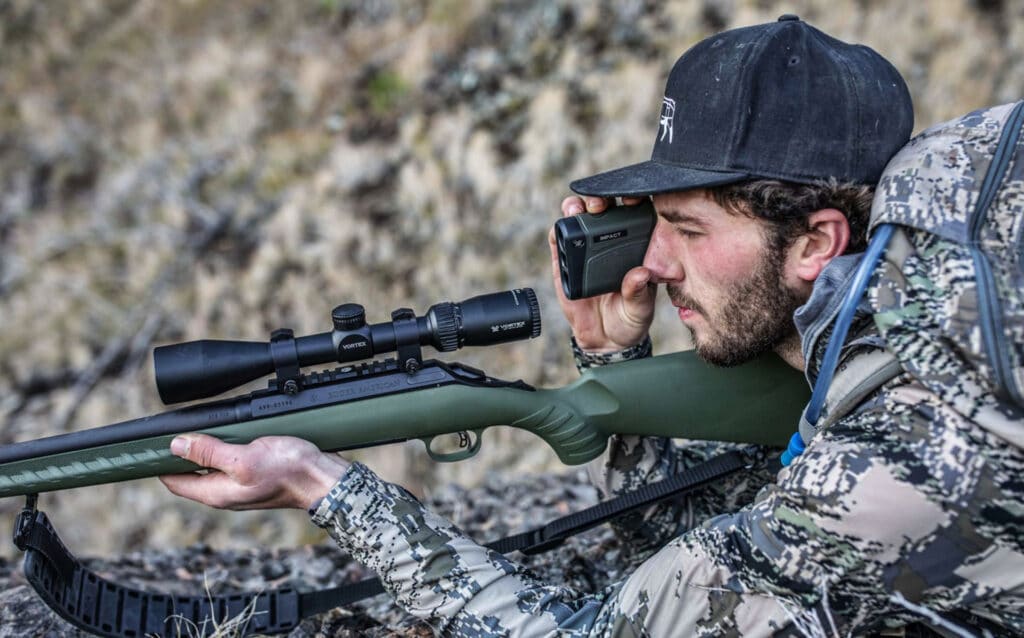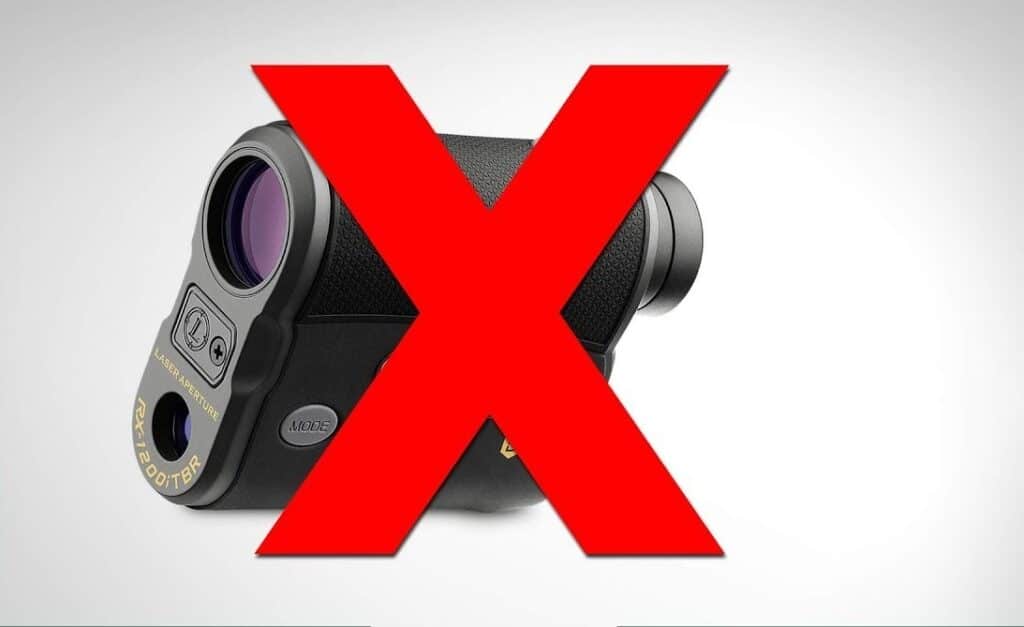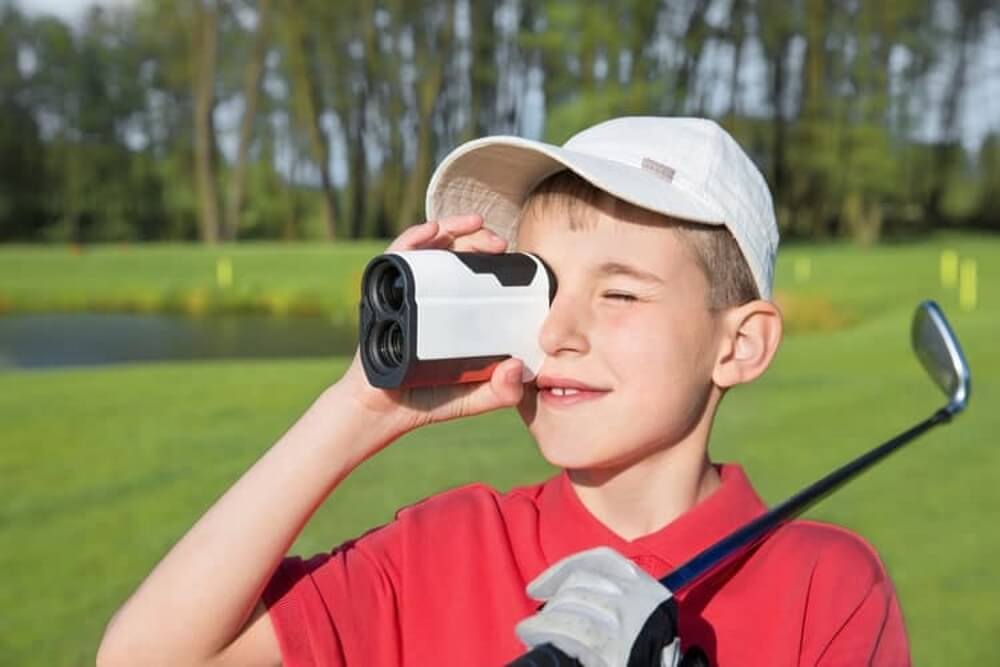

Even though the mode of operation of an average rangefinder is not complicated, you still need to know how it works to get the best out of it.
So, how does rangefinder work? A rangefinder basically focuses on a target and acquires a measurement that is typically displayed on the device’s screen. There are different types of rangefinders and their applications also differ in some cases. For you, a rangefinder can be about getting an accurate shot at your game. Or it can even be about getting the right swing when golfing. Besides, having a solid understanding of how the rangefinder works can help you pick the right option. So, what are you waiting for? Ride along with us as we explore the world of rangefinders.
Gone are those days when you had to judge a distance by your eyes only. Thanks to the advent of rangefinder technology, different types of rangefinders can help you get the job done, very easily and accurately. Read on to learn about the rangefinder types below:
We know that an optical rangefinder is a monocular device with built-in scales. But how does an optical rangefinder work? It works by using the principle of parallax—some form of triangulation. Also, the optical rangefinder features two lenses at opposite ends. These lenses focus on the object or target during application. Then, a focusing knob superimposes the two images on each other.
Additionally, the knob is calibrated with the scale responsible for converting the reading into the distance. Besides, the optical rangefinder requires utmost care to deliver accurate results. Essentially, you must point the rangefinder at the pin and focus with extreme care because the accuracy of the measurement depends on how precisely the device is focused.
Furthermore, the optical rangefinder offers various benefits that you can count on to ensure very accurate results. For example, this type of rangefinder does not need a reflective target. Apart from that, optics don’t get confused by surrounding terrain, weather, and other atmospheric conditions. Hence, the device’s vision is hardly influenced by external factors.
We must also mention that the optical rangefinder has various applications. For instance, it can be used to accurately measure distances on a golf course or a bow hunting exercise.
Another question; how do laser rangefinders work? This question is quite important because by knowing the answer, you can be able to employ the device skillfully in the field. So, let’s get you some answers. Laser rangefinders—perhaps the most accurate type—all work with the same basic concept. As you might have guessed, they emit laser beams at just the push of a button.
Then, those beams zoom in and bounce off your target. The device’s high-speed clock goes on to measure the total time it took the beams to bounce back off the object. Again, you can guess that the beam travels at the speed of light. Hence, it’s easy to use the time measurement to acquire the distance the beam has traveled. Afterward, the rangefinder displays the distance to you.
Besides, the laser rangefinder’s accuracy usually depends on the amount of beam reflected on your target. Essentially, the larger the target’s reflective surface, the more accurate the reading. Therefore, you can expect a reflective surface to return more of the beam for better accuracy.
Little wonder that some users attach small reflective pieces to their targets. For example, it’s not uncommon for golf courses to attach these reflective pieces at the top of their flagsticks. We must also note that laser rangefinders are arguably the most popular type and unsurprisingly, they have the most applications.
Besides their use for golfing, they’re ideal for long-range shooting and hunting too. So, if you’re looking for the best rangefinder for long-range shooting, a laser rangefinder is the smartest investment. However, you should ensure that you buy one that has the range, magnification, modes, advanced technology, and some extra features that suit your purpose(s).
Before we go ahead with defining a sonar rangefinder, what exactly is sonar Trusted Source What is sonar? Sonar, short for Sound Navigation and Ranging, is helpful for exploring and mapping the ocean because sound waves travel farther in the water than do radar and light waves. oceanservice.noaa.gov ? Since sonar is now commonly spelled with lowercase letters as we’ve done ourselves, many people do not know that it’s an acronym. In fact, SONAR stands for Sound Navigation and Ranging. As the full meaning suggests, a sonar rangefinder works using a sound pulse.
But how exactly does the sound pulse produce results? The sonar rangefinder uses the sound pulse and then measures the total time it takes the sound waves to travel to and return from a target. It also measures the speed of sound so that it can calculate the distance to the target accurately.
Besides, the sonar rangefinder uses various components, including a traducer, an acoustic pulse generator, a set of amplifiers, a delay timer, an acoustic pickup, and a display. Also, this type of rangefinder is used underwater, where radio waves and laser light don’t travel easily.
Therefore, it’s common to find sonar rangefinders on board boats and ships to measure the depths of water bodies. Their application is not limited to that; they’re also used to locate underwater targets such as submarines, fish, and so on. So, if you’re going fish-hunting, you now know the type of rangefinder to opt for.
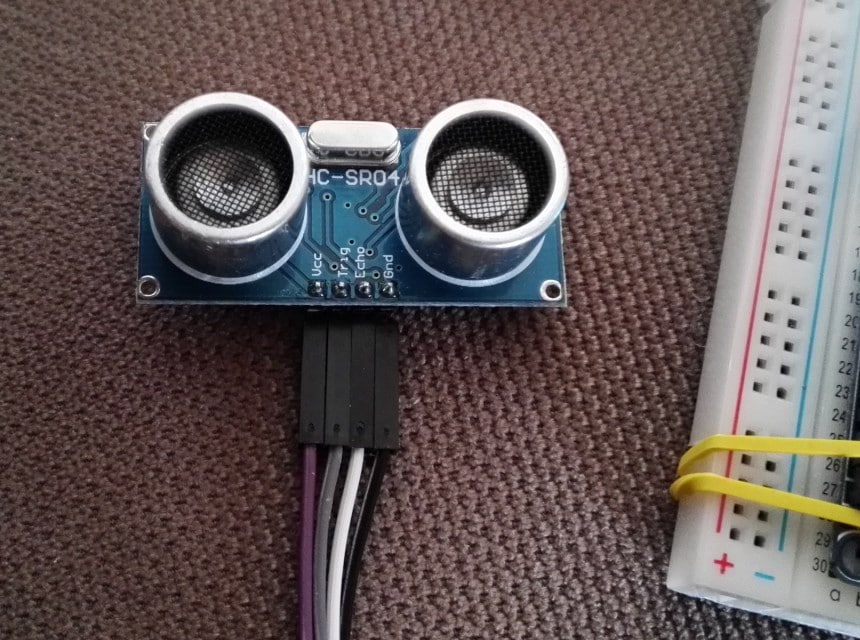
Lidar—like sonar—is also an acronym. It represents Light Detection and Ranging. Although it uses the principle of the laser rangefinder, the Lidar rangefinder works on a much larger scale. According to the National Oceanic and Atmospheric Administration (NOAA) Trusted Source What is lidar? LIDAR — Light Detection and Ranging — is a remote sensing method used to examine the surface of the Earth. oceanservice.noaa.gov , lidar sends out light pulses that are targeted at individual objects—also known as targets.
These light pulses bounce off the target and return to the device’s sensor. Afterward, the sensor uses the total time taken for each pulse to return to calculate the distance traveled. Besides, the lidar rangefinder is effective for the detection of very small objects. Like most other types of rangefinders, this one also has various applications, including road safety.
Despite the impressive ability of the lidar rangefinder, it has a few limitations that can pose some concerns to users. It is influenced by weather conditions such as fog and clouds. That means these weather conditions can cause inaccurate measurements during application. The rangefinder also operates over relatively short distances. Going more than certain distances can deliver inaccurate results.
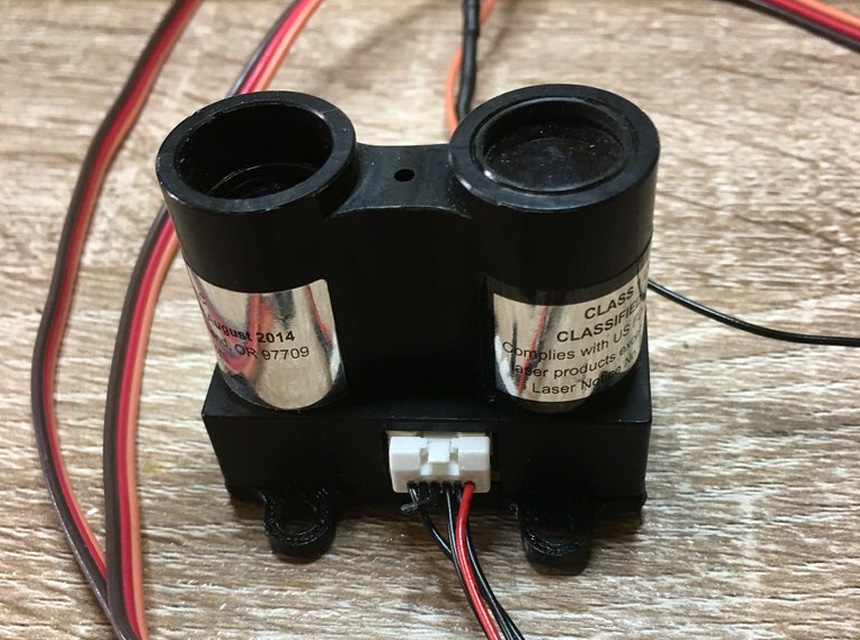
Radar is also an acronym that stands for Radio Detection And Ranging. A radar rangefinder works similarly to a laser rangefinder. However, instead of using a focused laser beam, a radar rangefinder uses a radio signal. This type of rangefinder sends out the radio signal in a spread and measures the time taken for it takes to bounce back to the sensor.
Since radio waves travel at the speed of light, the time and the speed for them to bounce back from the target can be used to determine the distance from the radar rangefinder to the objects within the spread. Besides, the radar rangefinder is perfect for long-range measurement because the medium through which radio waves pass weakly absorbs them.
Unlike some rangefinders such as the Lidar rangefinder, the radar rangefinder is not affected by weather conditions such as clouds, rain, fog, snow, and falling snow because they’re usually transparent to radio waves. It’s also not affected by ambient light (works in bright sun or at night).
Therefore, it’s easy to avoid certain radio frequencies that were scattered by raindrops, water vapor, etc., when designing radars. The implication is very accurate results.
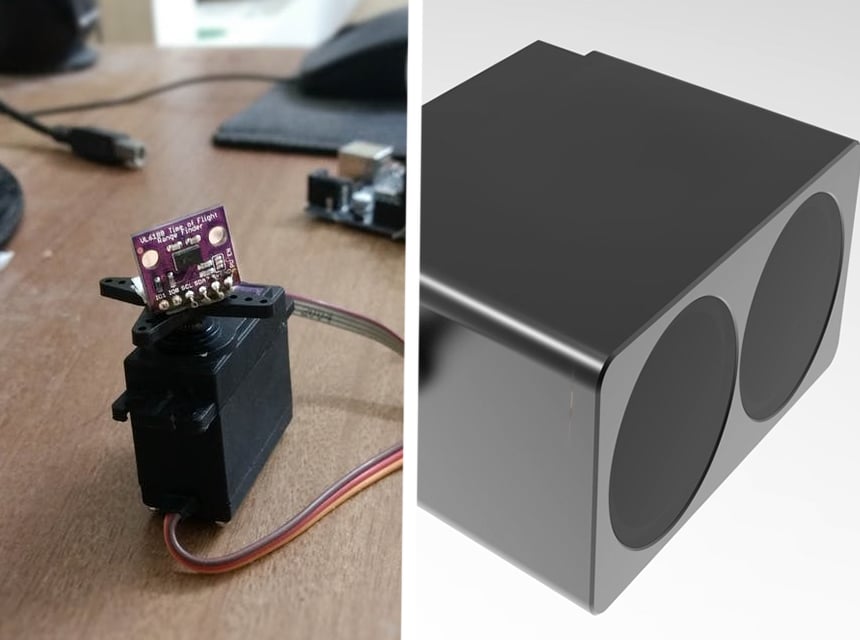
Ultrasonic rangefinders—like other rangefinders—are used to measure distance. However, how do they work? To measure a distance, they emit a pulse of ultrasonic sound that travels until it hits the target.
When that pulse hits the target, it reflects off the object and returns to the rangefinder. The device then measures the total time taken for the sound pulse to travel to the target and back to the sensor.
Furthermore, the front of a typical ultrasonic rangefinder features two metal cylinders that work as transducers. These transducers include a transmitting transducer and a receiving transducer. While the transmitting transducer transforms an electric signal into an ultrasonic pulse, the receiving transducer returns the reflected ultrasonic pulse to an electrical signal.
Besides, you can use ultrasonic rangefinders to determine the distance to an object or to find when something is close to the sensor. They’re ideal for navigation, home security, and object avoidance. Since they use sound to determine distance, ultrasonic rangefinders are not limited by the dark. Essentially, they work in the dark as well as they do in the light.
However, ultrasonic rangefinders are not ideal for long-range target acquisition applications. If the application goes beyond a short-range, don’t expect the most accurate results from this type of rangefinder.
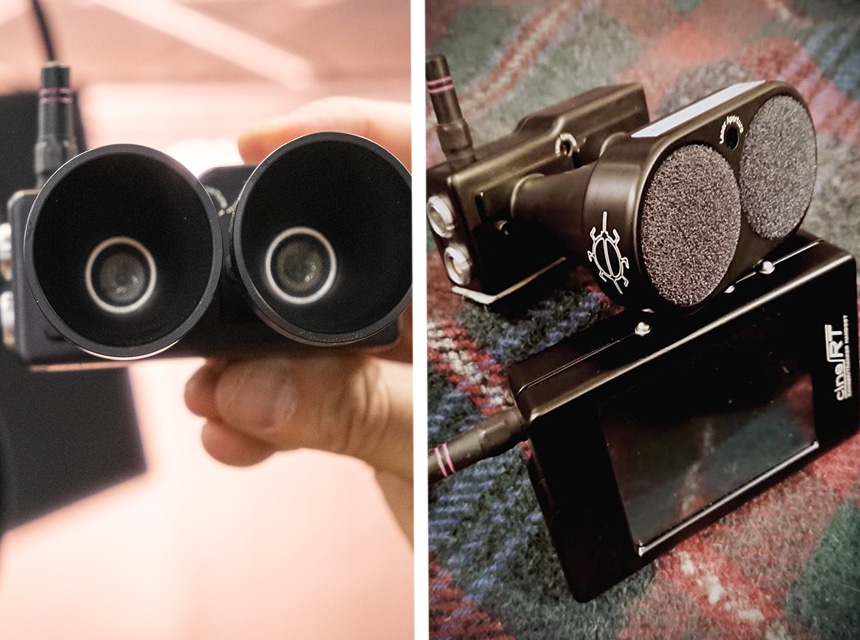
As we’ve mentioned various times in this article, rangefinders have numerous applications. If you own a rangefinder, there’s a huge chance you can use it for various purposes such as hunting, golfing, and more. Below, we’ll discuss the most popular tasks that rangefinders do:
Let’s face it; bow hunting can be a complicated exercise. This is mostly due to trouble getting accurate shots, no thanks to factors such as forest obstacles, different lighting, and weather conditions. You can agree with us that getting your shots wrong can ruin your day. However, the advent of technological devices such as rangefinders has tilted things in the favor of hunters.
Rangefinders are designed with the ability to precisely measure the distance at which the game animals you want to hunt are. Specifically, your rangefinder can help you determine whether you will hit your target or not.
Besides, aiming for the right distance does not even guarantee that you’ll hit your target sometimes, no thanks to obstructions that may be in the way.
The best way to avoid such obstructions is to invest in the best rangefinder for bow hunting that has features that can display your shot clearance and expose any obstruction. Having such a high-quality rangefinder can make your hunting life much easier. Most hunters tend to favor laser rangefinders thanks to their long-range ability.
After seeing the glowing reviews about the Vortex Impact Rangefinder LRF101, we were able to understand too why laser rangefinders are in high demand among hunters. This device provides accurate reads on distant targets that are up to 1000 yards away. It also features a Horizontal Component Distance (HCD) mode that ensures precise read while perched on an incline or in your tree stand. Plus, the rangefinder is waterproof, making it ideal for use in rough conditions.
Another laser rangefinder that caught our eyes is the TecTecTec ProWild Hunting Rangefinder. Although it falls behind the Vortex Impact in terms of range, it still measures up to 540 yards with advanced speed technology and continuous scan mode. Additionally, the TecTecTec ProWild boasts premium, ultra-clear, and multilayered optics that are complemented by a water-resistant body.
Another rangefinder application is in golf. The rangefinder is used to measure distance on a golf course. However, how do golf rangefinders work? Many manufacturers make golf-specific rangefinders that are designed to target the flag on the green.
Of course, you know that precision is central to lowering your scores. Thankfully, a rangefinder can provide much-needed clarity on the distance to a hazard, the distance to the flag, or the distance to clear a hazard.
Moreover, going for the golf-specific variants is quite important because they offer the versatility you need to adjust the distance. That’s something that won’t get from a hunting rangefinder because it’s designed to target distance and that may not be your aim.
However, some hunting laser rangefinders with a first target mode and a distant target mode can still work for golf. Trust us, the easiest and most reliable way to get the best shots is to integrate the use of a rangefinder into your pre-shot routine.
Don’t be surprised, rangefinder technology provides an incredible opportunity for photographers to capture the perfect shot. But how does a rangefinder camera work? We know that’s what you want to know. A rangefinder camera uses a range-finding mechanism to measure the distance of the target for accurate focusing.
The main component of the camera is the viewfinder which is offset from the lens. Hence, the image you see will not be the same image that’ll be recorded. While it’s not really noticeable over large distances, it’s more obvious at close ranges. Also, most rangefinder cameras feature a 0.8x magnification while some go as far as 1.1x magnification, which provides a near-perfect view.
Furthermore, most rangefinder cameras feature a cloth plane shutter although some go with a metal shutter system. Since there’s no moving mirror, there’s less shutter lag, a quieter shutter, and no ‘blackout’. This ensures a more fluid and quicker approach to photography.
Besides, the rangefinder camera is fully manual, making it tricky to learn for a novice. It requires the understanding of the dynamics of ISO, lens aperture, and shutter speed, in acquiring the ideal shot at any specific distance. Although all these require practice, the rangefinder camera’s precision can be quite rewarding.
Forestry is another industry that a rangefinder can come in handy. This industry relies heavily on an accurate measurement. And there is no better way to get the right measurement in the shortest possible time than employing a rangefinder.
Moreover, this device can be used to measure tree height and eradicate issues associated with activities such as slope grade monitoring, log deck volume measurements, and stem or sale boundary mapping.
Also, the best rangefinders for forestry feature functions that are important for simple measurement such as height, actual distance, horizontal distance, angle &vertical separation (height difference between two targets) measurement, and three-point measurement (height difference between two points).
Furthermore, the top laser rangefinders for forestry incorporate a clinometer and a calculator. While the rangefinder measures the distance between you and the top and the base of the tree, the clinometer measures the angle from your viewpoint to the top and the base of the tree. Then, the calculator does some basic trigonometry needed to calculate the height.
Lastly, rangefinder works well for ballistic, or better still, target shooting. A rangefinder provides an excellent tool that can help you improve your shot accuracy by building distance intuition. However, if you will be doing long-range shooting, you should ensure that the rangefinder you’re using is programmed for long ranges to avoid mistakes.
As we’ve hinted a few times in this article, there are many factors that can influence the vision for your rangefinder. These factors include:
Rangefinders are programmed to use various approaches to determine which of the readings they should display. Below, we’ll discuss how those approaches relate to rangefinder vision analysis:
The closest spike is an approach in rangefinder vision analysis that looks for the closest peak. This approach helps to filter out the “false” readings from distractions such as rain, fog, etc, that are scattered in pattern and do not result in a peak.
Remember that we mentioned how weather conditions can affect the vision of your rangefinder. These conditions also mess with the readings. However, the closest spike approach helps to correct the readings.
The first reading approach is a simple approach employed by older rangefinders. However, a few rangefinders still employ this approach for their vision analysis. As you might have guessed, this reading comes from calculating the first beam that is reflected back to the unit. This calculation comes after the rangefinder receives the first beam. After calculation, the corresponding distance is displayed.
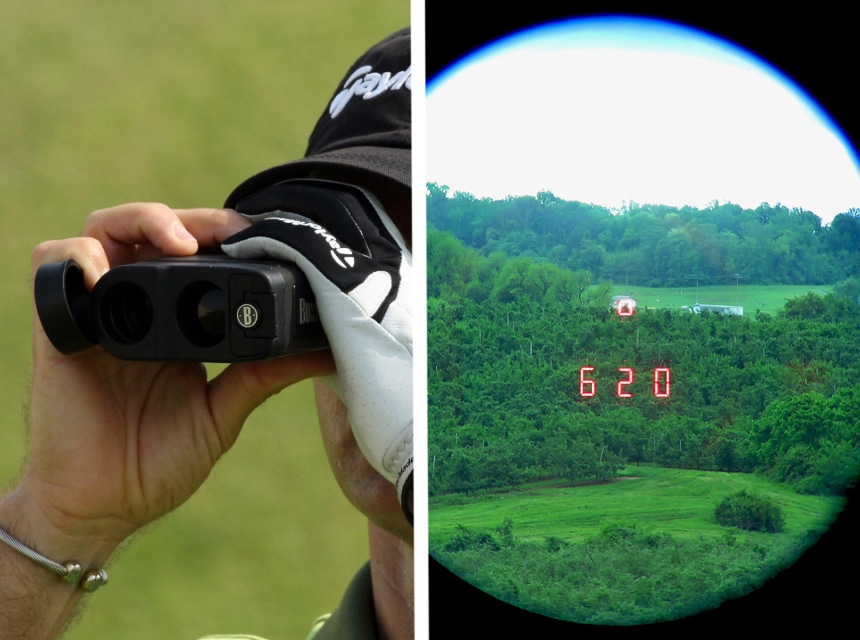
The larger cluster approach analyzes the complete set of readings. It seeks out the biggest group of readings. For example, if there’s a group of 6 readings next to each other at 300 yards and there’s a group of 7 readings at 600 yards, the approach would display 600 yards because it has the biggest group of readings.
Like the largest cluster approach, the highest spike approach also analyzes the complete set of readings in a bid to find the largest peak of readings for the same distance. It also assumes that the largest peak is what you’re trying to range. In general, we think this is a good approach. It’s especially important when you’re ranging reflective targets perpendicular to you.
The furthest spike approach is a bit similar to the closest spike. However, they are on the other side of each other. Instead of looking for the peak that is the closest, the furthest spike approach looks for the peak that’s the furthest out. This approach is an ideal option when trying to measure a target that’s partially obscured.
When you’re new to the concept of a rangefinder, it’s not out of the ordinary to think you will need a whole manual to educate yourself on using the device when all it takes is this one article. As the article established, using a rangefinder is not as complicated as most people think but it requires understanding how it works. That begs the question: how does rangefinder work?
This article has thoroughly dissected six types of rangefinders and explained how each of them works to deliver results. With the right rangefinder, you can easily measure the distance to your targets. Thankfully, these devices don’t cost an arm and a leg. You can even acquire the best rangefinder under $200 but you must ensure that it’s one that is designed to take care of your need(s).
